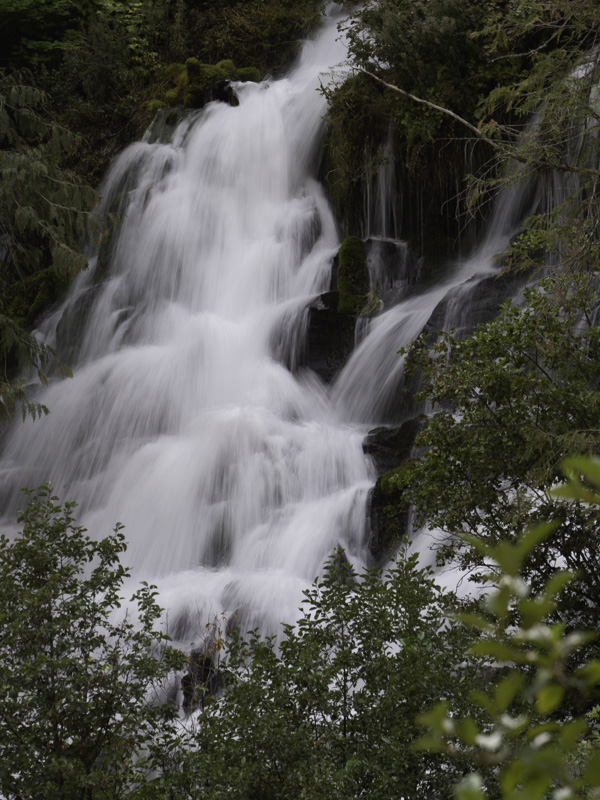Every Picture Is a Compromise
Lessons from the Also-rans
Most photography websites show the photographer's very best work. Wonderful. But that's not the full story of a creative life. If we want to learn, we'd better pay attention to the images that aren't "greatest hits" and see what lessons they have to offer. Every picture is a compromise — the sum of its parts, optical, technical, visual, emotional, and even cosmic – well, maybe not cosmic, but sometimes spiritual. Success on all fronts is rare. It's ok to learn from those that are not our best.
This is a series about my also-rans, some of which I've been able to improve at bit (i.e., "best effort"), none of which I would consider my best. With each there are lessons worth sharing, so I will.
Original digital captureWhat I saw that I liked:Cute little waterfall after a day of rain on the previous day. A lesson about lens hoods:I have pretty good lenses. They are top-of-the-line with superb anti-flair coatings. Even so, when the sunlight falls directly on the lens, no matter how good the lens and lens hood are, there is a risk of lens flare and shadow degradation. In both the image above and the one at left, I've done nothing whatsoever to the RAW captures. No processing at all. In the one above there was a shaft of sunlight falling directly on the front element of the lens. The waterfall was positioned such that I was pointed toward the sun which was just above the hill. The waterfall itself is in the shadows. Note the weak shadows and lack of shadow contrast. That's because of lens flare. In the one at left, I used my baseball cap to cast a shadow on the lens. It required careful positioning so I didn't include the cap in the field of view. Notice the deeper shadows and contrast that becomes visible when the lens flare is eliminated. Lens hoods are great. I never shoot without them. But we should still pay attention to the possibilities of introducing lens flare if even a tiny bit of direct light falls on the front element of our lens. Buy an expensive shadow caster accessory device — or use your baseball cap. |


